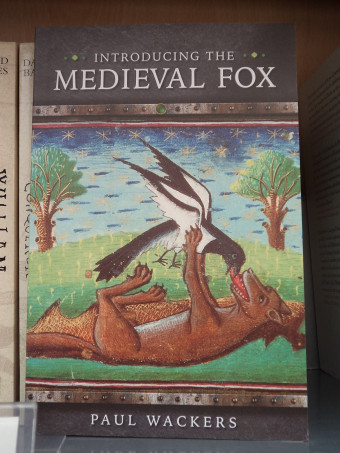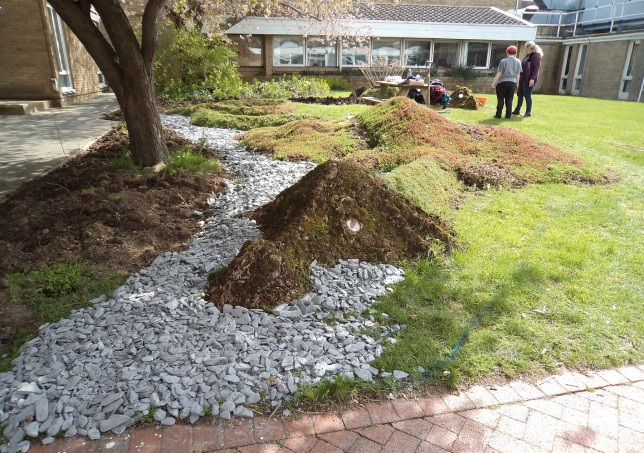For this short lead-up to the Easter Weekend, I’m going to begin with two items relating to the Kent Maps Online project run by Professor Carolyn Oulton, Michelle Crowther and Hayley Smith, then Dr Diane Heath’s NHLF-funded Medieval Animals Heritage events taking place in April, before turning to the ESRC-funded ‘Everyday Life and Fatal Hazard in Sixteenth-Century England’ research project of Professor Steven Gunn, which will feature in his talk at Tudors & Stuarts 2023, please see: www.canterbury.ac.uk/tudors-stuarts
Firstly, Michelle Crowther has kindly passed this to me: Michelle Crowther attended History and Archives in Practice #HAP23 which was held at the Institute of Historical Research on Wed 29 March. The theme of the conference was Collecting Communities: working together and with collections. Michelle delivered a video presentation about the Kent Maps Online project which was shared on Twitter. She will also be part of a panel discussion at an online event hosted by the Royal Historical Society on 27 April, please see: https://royalhistsoc.org/events/rhs-events-programme-2023/history-and-archives-in-practice-2-online-panel-27-april-2023/ Booking for this event is available via EventBrite.

Secondly, this year’s 1-day Kent Maps symposium is entitled ‘Reimagining Kent’ and will take place on Wednesday 26 April. This is a free in-person and online event but you need to register beforehand at https://www.canterbury.ac.uk/arts-and-culture/event-details.aspx?instance=420206 More information will be sent out nearer the date with details on how to access the symposium virtually, plus where and how to find the venue if you are attending in person. The theme seeks to celebrate the ways in which we might recuperate Kent’s forgotten, ignored or overlooked past and reposition it within the present. Among the speakers will be Drs Sonia Overall and Maria Diemling, also Jane Joyce and Martin Crowther, and for a second exploration of historic Dover, I have the final slot.
Now to Diane’s Medieval Animals Heritage project events for SEND children in April. Working with local artist and writer Alex Le Rossignol, Diane and the other project organisers Dr Pip Gregory and Martin Crowther held a successful ‘Making a Medieval Animals Folding Picture Book’ half-day workshop on Saturday 1 April at Dover Museum. Their next event is back in Canterbury when on Easter Tuesday 11 April at 2pm there will be a fun-filled ‘Introducing the Medieval Fox – family art activities and book launch’ at Canterbury Christ Church University in the Laud Building room Lg25. This is near to the CCCU Bookshop, Touchdown café and close to the garden and pond. Again, this free event is for SEND children aged 4–18, their siblings, parents and carers, and advance booking is essential at: https://www.eventbrite.co.uk/e/introducing-the-medieval-fox-family-art-activities-and-book-launch-tickets-597978789657?aff=erelexpmlt The book launch will follow at 4pm.

Moving further into April, the next event Diane and her colleagues are organising is an ‘Animal Safari at the Hambrook Marshes – for SEND families’ on Saturday 15 April, and it has proved so popular that it has sold out already. This brings me to their final event for April, for which there are still free tickets available for SEND families. This is ‘Celebrating Medieval Dragons on St George’s Day’ which is, of course, on Sunday 23 April from 2pm to 4pm. We will be back in Laud Building room Lg25 on the Canterbury Christ Church campus and our SEND families will get a chance to design a colourful dragon costume to wear on St George’s Day and in the Canterbury Medieval Pageant Parade. There will also be a chance to visit ‘Spiro’, our sleeping dragon and help us name the baby dragon, as well as join in a dragons’ egg hunt and interactive storytelling. Booking beforehand is essential, so please see: https://www.eventbrite.co.uk/e/celebrating-medieval-dragons-on-st-georges-day-tickets-598031988777?aff=ebdssbdestsearch
And now, as they say, for something completely different! Diane has been very busy compiling the souvenir brochure for Tudors & Stuarts 2023, so many thanks Diane, and hopefully shortly I’ll be able to announce the very exciting details for the 2023 Becket Lecture. Furthermore, I have been back at St Thomas’ Hospital/Eastbridge Hospital working with Louise Knight, and her assistant Julia Brown, as Louise moves forward to provide new displays that will feature medieval artefacts from the Three Archiepiscopal Hospitals of Canterbury, as well as materials directly relating to pilgrimage – especially appropriate for a medieval hospital where the primary function was to care for poor pilgrims. More on that as this develops because it will bring out of storage items loaned to Canterbury City Museums and Canterbury Cathedral that belong to St Nicholas’ and St John’s, the other two archiepiscopal hospitals, as well as materials belonging to Eastbridge, currently held at Canterbury Cathedral Archives. Having written articles on some of these fantastic objects, it would be brilliant for visitors to Eastbridge to have an opportunity to enjoy looking at them and to find out how they might have been used in the medieval past and how they may have come to the hospitals in the first place.

Finally, I want to turn to Professor Steven Gunn’s fascinating exploration of Tudor coroners’ inquests which he will employ for his lecture on Saturday 29 April at 4.30pm: https://www.canterbury.ac.uk/arts-and-culture/event-details.aspx?instance=413007
and I’m going to borrow a piece I wrote recently for the Lossenham Project monthly newsletter that I called ‘The perils of churchgoing in late Elizabeth Rolvenden’. In Elizabethan England the 1590s were the most perilous period of that monarch’s extremely long reign. However, to date most attention has focused on the disastrous grain harvest of 1596, which followed bad harvests in the preceding two years, with the catastrophic cumulative effect of rocketing grain prices, malnutrition and even starvation, as well as social unrest and the fear that ‘the countryside might erupt’. Nor had plague disappeared either and England was engaged in a series of conflicts throughout the period. Consequently, you might say that the Four Horsemen of the Apocalypse, especially the rider on the Pale Horse (Death), may have had some time off earlier in Elizabeth’s reign but were back up and rearing to go in the last years of her reign.

However, mortal danger could also come at the most unexpected time and in the most unexpected place, as in the case of Henry Siesly, an upstanding presumably God-fearing parishioner from Rolvenden and a local butcher. For on a ‘normal’ Sunday in April 1598 Henry was sitting in his pew at the east end of the nave and close to the pulpit from whence the vicar, William Reade was delivering his regular Sunday sermon. Suddenly a book belonging to the vicar, which he had taken up into the pulpit, fell off the ledge hitting Henry on the right side of his head. Whether it knocked him out is not recorded but he was certainly wounded and presumably carried or at least aided back to his house, and, at some point, physicians and surgeons were called to give their opinion. As the consensus was that it was neither life-threatening nor mortal, it was doubly unfortunate that the poor man “languished” for almost a month until he died at 3pm on the 20th of May. So, what was book, and more importantly what was it worth? The answer to the second question is 2s 6d and it remained in the custody of the vicar as his possession, and to the first – Opera Bullingerii.

The mostly likely work of Heinrich Bullinger, a prolific Swiss Reformer and theologian, is his The Decades, a compilation of 50 sermons, which was one of the most popular Protestant theological books of the period not only in England, but across western Europe and even beyond. Yet, this may be the only time it might be said to have sped a soul that quickly to heaven!
Thus, it just remains for me to wish all readers of the CKHH blog a Happy Easter and next week, we’ll launch the Introducing the Medieval Fox!
 Centre for Kent History and Heritage
Centre for Kent History and Heritage Sheila Sweetinburgh
Sheila Sweetinburgh 1237
1237


